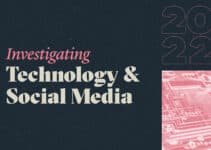I recently wrote about remote work and the rapid growth of the Internet of Things and how government agencies can and should leverage technology to stay ahead of the curve. But those two aren’t the only trends we’re looking at in 2022 and beyond. Two other trends agencies need to stay alert to hit much closer to home — how agencies can protect themselves from cybercriminals and the need to proactively plan for updating legacy systems. And here, too, the thoughtful application of technology can make all the difference.
Cybersecurity
Perhaps now more than at any time in history, agencies are focusing on how to protect confidential information. From the much-publicized 2020 SolarWinds Orion hack to the more recent Pulse Secure VPN and NOBELIUM hacks, keeping cybersecurity thieves out has become one of the government’s top priorities — especially so in an age of cloud-based computing and increasing demands for smartphone productivity. But there’s a cost associated with the freedom of moving from desktops to laptops — or laptops to smartphones — in that data becomes harder to lock down. In the rush to do more work offline or through apps, how do you stay cutting-edge while keeping information secure and not exploitable?
As important as the macro perspective is, you can’t look past the finer details — especially when it comes to cybersecurity. It’s not enough to know intended use and basic schematics — you also have to know things like:
- What tech is needed for a device to work? How does your tech integrate with that device’s security?
- What third-party software is being used?
- What do updates look like? Are they automated, or is the end user required to initiate them?
- Follow the data — what vulnerabilities exist as data moves in and out of the cloud?
Especially when it comes to security, there is only one direction: forward. The older the tech, the more easily it becomes compromised or incompatible with existing processes. While many directors might bristle at having their agency labeled a “technology agency,” the truth is every government organization has its own tech requirements and demands, and it’s their responsibility to keep up without compromising information.
Modernizing Existing Technology
Just as important as understanding where your agency is going, though, is knowing where it is now. Government agencies never have the luxury of modernizing from scratch, of saying “out with the old and in with the new.” There will always be legacy hardware and software and existing information and processes that must be preserved.
The challenge becomes modernizing in a way that preserves and incorporates existing data and technology while introducing new tech — without any downtime. This is especially challenging when you bring in tech from the private sector. Technology from the private sector doesn’t have the same goals and requirements as government work, which means agencies are tasked with taking what’s hot and new in the private space and finding a way to integrate it with existing technology without introducing output or security flaws.
This is where having a partner who understands the necessity of strategic planning is critical. With strategic planning, you can look at new technology with an eye toward the current demands of end users and what they’ll likely look for in the future. If a device needs additional battery life, do you find room for a bigger battery, or can you find a way to accomplish the same goals with less battery drain? If your end users complain that your device gets too warm after extended use, then how can you plan for better heat transfer and dissipation?
The Value of Partnership
In both instances, technology is part of the solution — but it’s technology that’s applied thoughtfully, by an organization or technology partner with an understanding of strategic planning and the mission, clients, limitationsand legacy tech within government agencies. An outside partner with this understanding can also provide an additinal value — an objective, third-party evaluation of your cybersecuity and legacy systems, the kind of evaluation you can’t get from internal teams. This perspective can not only help you upgrade your agency’s cybersecurity and legacy systems, but it can help you prepare for whatever comes next.


